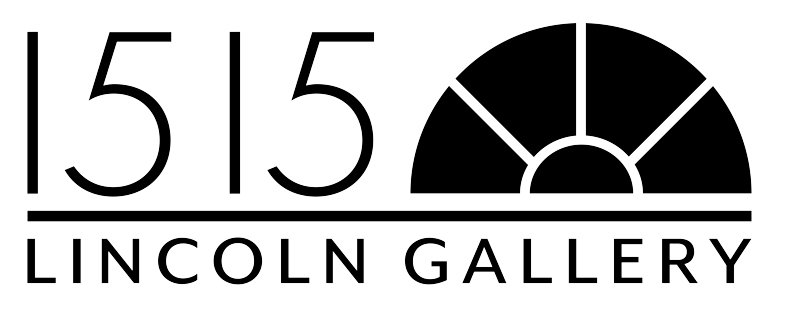A Natural Model for Art
As a child, Roger Runge was deeply passionate about two of life's great riches, art and gardens. His family was full of both painters and planters. Wheat farmers from Kansas came from his mom's side, and several aunts on his dad's side were artists. But, no matter where his family lived or what they did for work, they made time to explore their creativity, cultivate gardens, and share the fruits of their labor. So it is not surprising that Roger's stunning Oklahoma City landscape designs present a blend of artistry and horticulture.
His family labeled Roger the "little artist," and his love for learning and desire to create forged a clear artistic path. After graduating from high school, he went on to study ceramic design at the University of Oklahoma and taught pottery at the Firehouse Art Center in Norman. Following college, he moved to Louisiana, where he sold his one-of-a-kind creations, taught ceramics, and lived the freeing Bohemian lifestyle. He found that each new opportunity and environment furthered his education, honed his talents, and enabled him to teach others to do the same.
Whether managing a craft center, working for a small non-profit, or launching his own publishing business, Roger's commitment to mastering new creative mediums and applying his skills to his passions never ceased.
In 2002, he found a way to merge his artistic gifts with gardening. He began working part-time for his friend John Fluitt, a prominent landscape designer. Soon, Roger was applying everything he learned from his family, schooling, and creative experience to landscape design.
Roger Runge
Aristotle once stated, "Art takes nature as its model," and Roger's artistic approach exemplifies this belief. Most people that step into a natural space see the world from one perspective. But Roger's vital art education gives him the unique ability to see the area from multiple angles. Roger looks at each project like he's viewing a painting. For instance, he looks from the street to imagine a portrait of the house. And, he looks out the windows from inside to frame the natural form outside. Each different viewpoint helps Roger perceive the exterior environment as art from all sides. Next, he focuses on elements that enhance the natural canvas: color, texture, form, and fragrance. He works with a natural canvas that is constantly growing and evolving. So unlike a painter that finishes a painting after the last brush stroke, Roger must consider how the plants in his designs will flourish over time. But he loves the lack of ultimate control over his work. He stated, "I find it a little boring if I design something and come back in three months and it looks exactly how I imagined." For Roger, the splendor of landscape design is the serendipitous force of nature taking shape.
The critical part of Roger's landscape design process is creating a connection between his client's desires and what he's inspired to create. He and his colleagues at Garden Design Associates, Inc. have a reputation for being proficient, creative, and mindful of the Oklahoma City aesthetic. They prioritize the design context, working environment, the house's architectural style and recognize how a landscape relates to the city. In addition, when working with other artisans, like stonemasons, carpenters, or sculptors, everyone shares a strong connection to the owner's intentions and the project vision.
Roger believes the following elements are vital to designing a clear project concept:
Determine the Use - Roger states, "People often feel they have to do something because of the space, but part of the creative process is defining the use for yourself." Like a painter approaching a canvas with a clear idea, homeowners should approach their outdoor space with a clear sense of their use of the area.
Consider the Interior – Roger feels people have no problem selecting clothes or their home's décor. However, very few put extensive thought into their backyard plants. For Roger, the garden is an extension of the indoor space, so it should connect to the interior design.
Look from Inside – Roger believes homeowners need to view their outdoor space from all possible perspectives, especially inside. Roger asks clients to consider their garden from every window so they can envision how they frame the outside because you create splendid natural portraits when you take time to look from the inside.
Simpler is Better – Too often, people have grand ideas of how they want to pack as much color, texture, or features into a space without considering how it will evolve. Roger believes a simple, thoughtful approach helps beauty grow naturally.
Roger's appreciation of art and the creative process has made him a frequent visitor and strong supporter of Objets Trouvés and the celebration of art. He often attends exhibition openings, has purchased ceramic pieces from the gallery, and has introduced Susan to clients who are avid collectors. The shared love of artistry has forged an incredible connection that sparks meaningful conversations and collaborations with Objets Trouvés. And now, after a 40-year hiatus, Roger's adoration for pottery and plants has come full circle, and he's having the time of his life. Recently, his experience designing landscapes has inspired him to return to his pottery craft. As a result, he rents studio space at Oklahoma Contemporary and has begun merging inspiration from the natural world with classically-inspired vessel forms. Roger exemplifies the reciprocal relationship between art and the natural world, and his work highlights the inseparable bond that inspires creativity, growth, and beauty that we can all enjoy.
To learn more about Roger Runge and his work, please email Roger at: roger@gardendesignok.com





